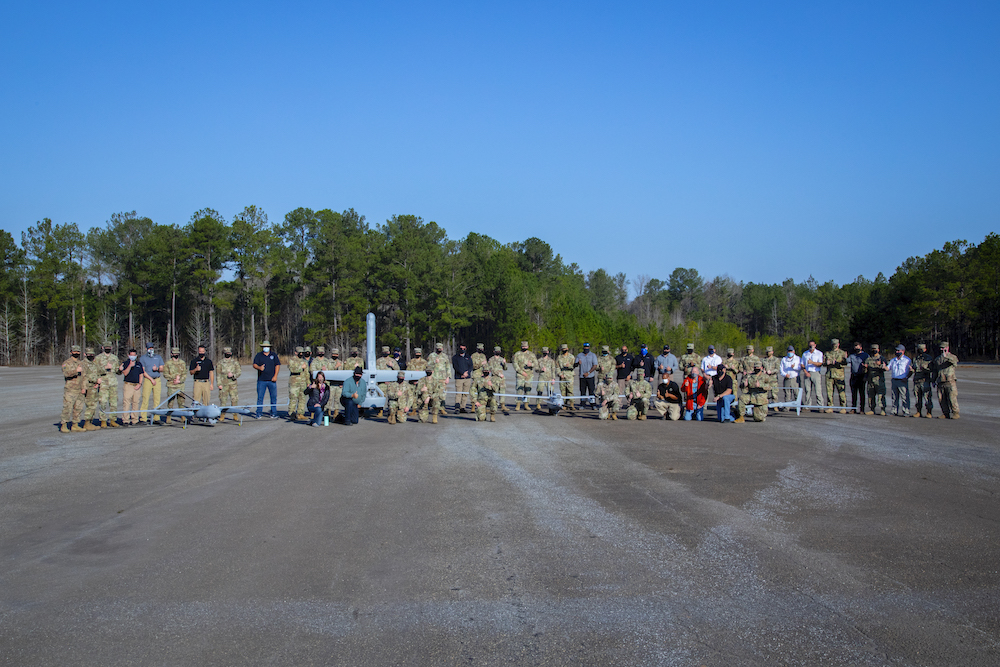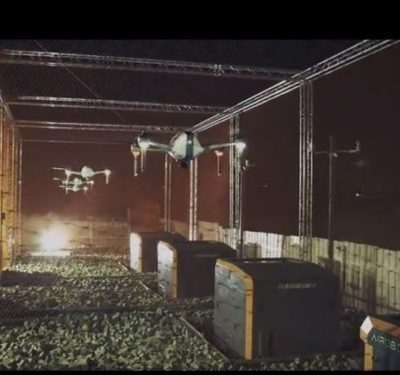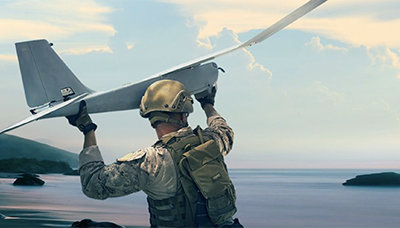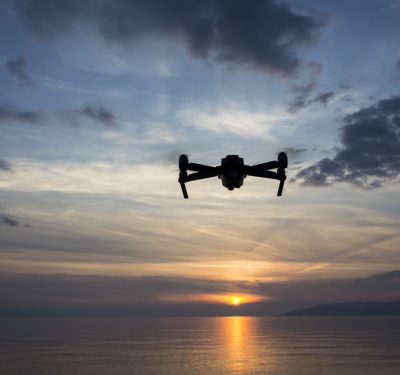
Contenders at the FTUAS rodeo. Photo courtesy of U.S. Army.
In a March 4, 2020 Policy Memo (PM), the new Secretary of Defense (SecDef), General Lloyd Austin, unveiled his top three priorities: defending the nation, taking care of people and succeeding through teamwork. At the AUVSI Unmanned Systems Defense Phase I Air Day, Christopher O’Donnell, Acting Principal Deputy Assistant Secretary of Defense or Acquisition (DASD(A)), who provides guidance for unmanned systems (UxS) across all domains, discussed how the DOD will fulfill these priorities in the unmanned aircraft arena through Autonomous and Remotely Crewed Systems (ARCS) and counter-UAS (CUAS).
ARCS de Triomphe
O’Donnell’s examples advancing ARCS were both Army endeavors: Short Range Reconnaissance (SRR) and Future Tactical UAS (FTUAS).
The DASD described the SRR effort as “how we get quadcopters in the hands of the warfighter.” Public-private-joint collaboration resulted in the Blue small UAS (sUAS) program, with five companies now on the General Service Agency’s (GSA) shortlist of trusted non-foreign sUAS. “The DOD is working on the next Blue UAS program for larger systems to carry larger payloads,” O’Donnell said. New Blue UAS will be added to the list, with two key goals: cybersafe UAS systems and strengthening the U.S. defense industrial base. An Army Requirements Oversight Council (AROC) decision on the SRR is expected by end of third quarter 2021.
According to O’Donnell, the FTUAS program illustrates another great way to partner with industry for COTS (commercial-off-the-shelf) warfighter tech (see IUS FTUAS coverage here). Using a “buy-try-inform” approach, the Army conducted a year’s worth of demos—500-plus flights and 1,500-plus flight hours—with the four industry partners (AeroVironment/Arcturus, L3Harris, Martin, Textron) vying to replace the Shadow UAS in brigade combat teams. The capstone event was held in early March at Fort Benning, Georgia. An abbreviated capability document has been created, an AROC date is pending and the Army is initially scheduled to field FTUAS to eight UAS Platoons in FY23.
Efforts to Counter
Both the SecDef’s PM and event speakers focused on the need to defeat peer competitors (read: China). Per the DASD: “The Services will increasingly operate ARCs. Our adversaries are doing the same.”
To synchronize efforts, the DOD recently created an Army-led Joint Counter sUAS Office (JCO). It published a small CUAS strategy with three objectives, upon which the DASD elaborated:
- Ready the Force—A risk-based approach for a suite of solutions to address emerging requirements: threat assessments, syncing S&T, accelerating CUAS tech, developing common architectures and establishing joint CUAS T&E methodologies.
- Enhance the Force—Joint capabilities across the Doctrine, Organization, Training, Materiel, Leadership and Education, Personnel, Facilities and Policy (DOTMLPF-P) spectrum. The Army has established a full-time CUAS school at TRADOC, and effective C2 with fixed, semi-fixed, semi-mobile and hand-held solutions are all on the table. The DASD emphasized that acquisition (AQ) at the “the speed of relevance” is the heart of DOD AQ reform efforts.
- Build the Team—Deeper and broader relationships with allies and partners to protect U.S. interests at home and abroad. This involves new partnerships, a national security innovation base, interoperability and interagency programs.
The overall message: unity of effort across stakeholder constituencies will ready the joint force for today’s challenges and prepare for the future—Army style. HOOAH!






